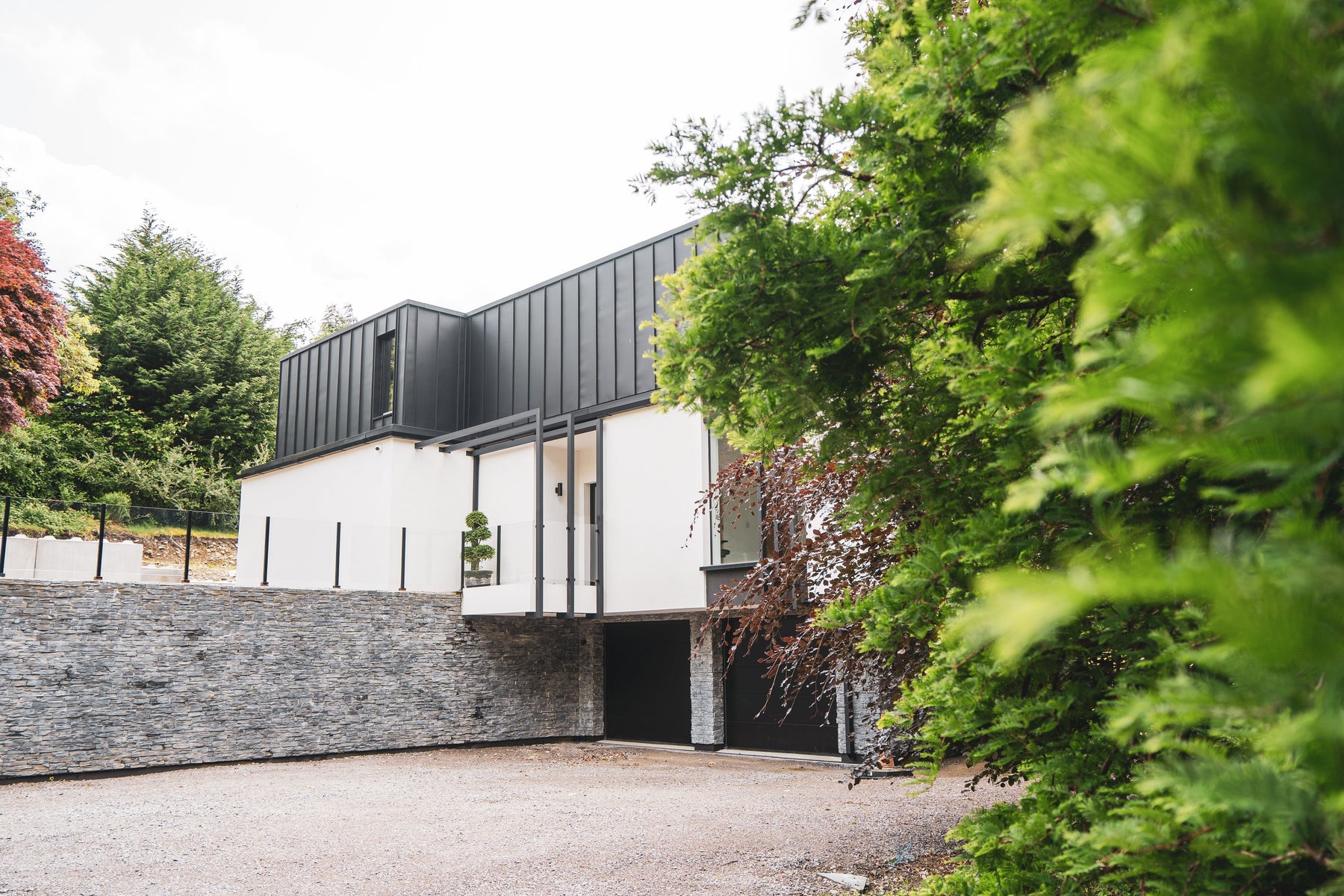
Case Study - Windermere Home
Windermere, nestled in the heart of England’s Lake District, is home to a stunning modern smart home that brilliantly leverages the power of KNX with Loxone to create a sublime living space. The homeowner set out to create a modern, minimalist home and wanted the home technology to integrate into the fabric of the building to reduce the aesthetic impact on the clean, precise interior. The solution was delivered by Potes Smart Homes and the end result is absolutely gorgeous.
SHOP MOTION SENSOR 360 - KNX
At its core, this home is using Loxone to provide the control of lighting, heating, shading, intercom and multi room audio. However, to enhance the interior the client was keen to use Faradite sensors for their tiny size. To maximise the power of this installation, the team at Potes decided to use the Faradite KNX motion sensors with Loxone for a number of reasons:
-
Wiring simplicity / adaptability
By wiring for KNX accessories, a far more dynamic and expandable wiring topology can be realised, it is even possible to add more KNX devices by spurring new KNX devices from existing locations if needed. -
More functionality
As our KNX sensor includes both motion and brightness sensing the Loxone system can make more informed automation decisions. -
Future proofing
As the system is based on a KNX back end, adding devices, expanding the system and changing end points is possible as KNX is an open protocol with 1000s of manufacturers. -
Choice
By using KNX end points, the choice of KNX keypads, sensors and various other devices is expanded almost infinitely due to the huge number of KNX manufacturers to choose from.
As anyone who has ever integrated two systems will know, multiple levels of intelligence can cause the potential for problems as the two systems ‘fight’ over who is in control. To explain how they achieved this Christian Potes, Director at Potes Smart Homes explained. “Integrating the Faradite KNX devices with Loxone was simple. The Faradite devices were given their individual KNX addresses via the ETS software. Then we created basic group addresses that we used for the motion sensor group object and a second KNX group address for the LUX value. Once we had all the KNX sensors programmed with these two group addresses created for each sensor we then started the Loxone config work. Inside Loxone config we created the various group addresses, set the correct data type and then these KNX inputs were available for us to use in Loxone config.”
From here, the KNX group address for the motion sensor in each room was connected to the lighting control function block motion sensor input and programmed inside Loxone as usual. Similarly, the LUX value group address was connected to the Lighting controller block brightness value input and parameters configured as with any other Loxone device.
As Potes are an experienced Loxone installer, they are masters at Loxone config, the key to the success of this KNX integration with Loxone is keeping the KNX programming simple. Essentially all the KNX devices are doing is reporting the state of the motion sensor and the value of the LUX sensor from the Faradite KNX sensor. These values are communicated on the KNX bus, to the Loxone KNX extension, where the Loxone system can decipher the comms to be used in the Miniserver.
Christian continues “this solution requires the ETS programming software and a basic knowledge of ETS, but once the initial, basic programming is complete, we are back using the Loxone config software which we know inside out”
This fantastic solution offers Loxone integrators an extremely large pool of KNX devices to choose from. In this project, our Motion Sensor 360 - KNX was the choice, but equally our Motion Sensor 360 - Plaster In - KNX could have been used for a near invisible motion sensor solution. As explained earlier, the KNX wiring topology options are far more flexible and expandable and there is no reliance on a proprietary system.
Finally, Michael Akers, Director at Potes Smart Homes explains what this new KNX to Loxone integration solution could do for their business “We are huge fans of Loxone and understand the config software well, but adding the KNX integration piece means we have a larger pool of customer facing devices to choose from, which essentially means we have a higher chance of winning the project as the customer has a huge choice of keypads, motion sensors and other periphery devices”
To take a closer look at exactly how to integrate our KNX motion sensors with Loxone please see our blog Faradite KNX & Loxone integration guide. In the technical blog we explain the step by step process for setting up the KNX motion sensors and using them in Loxone.
SHOP MOTION SENSOR 360 - KNX
This project was an exercise in creating a modern, minimal smart home that provided the homeowner with powerful automation without too much visible tech. By harnessing the flexibility of KNX wiring, the nearly infinite choice of KNX end devices, and the powerful visual logic configuration capabilities of the Loxone Miniserver, the team at Potes Smart Homes have given this smart home something truly smart.

